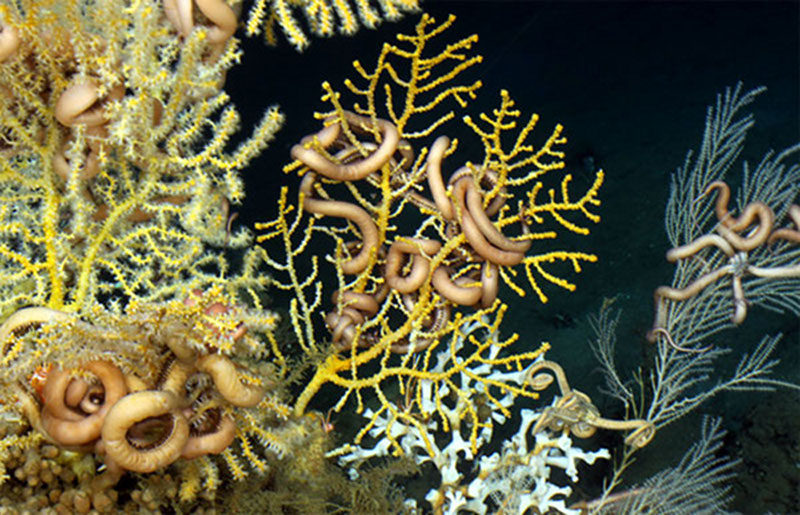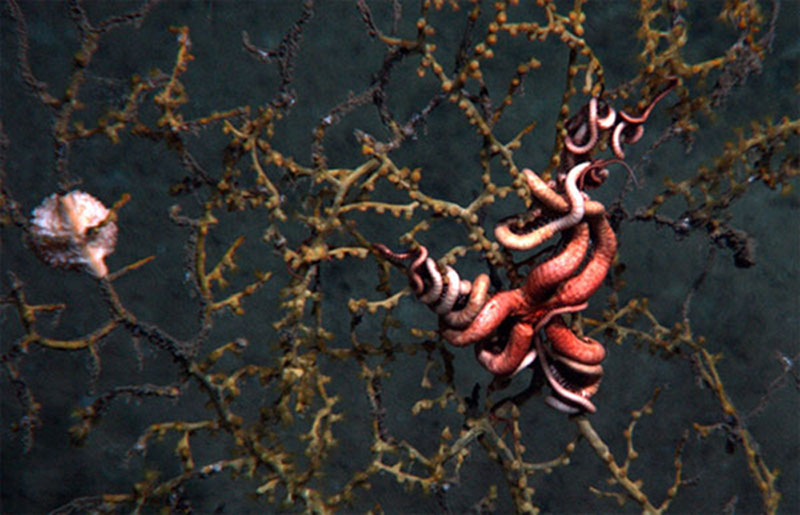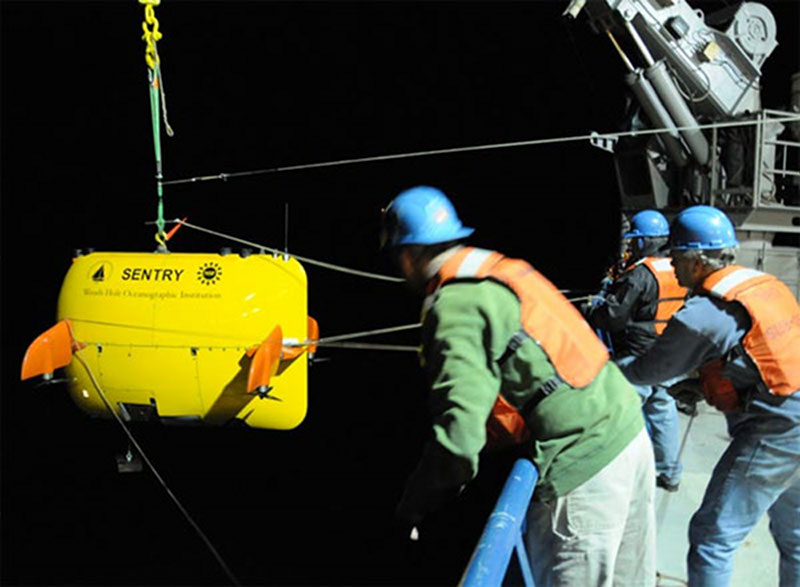
By Chuck Fisher, Professor of Biology - Penn State University
In the wake of the Deepwater Horizon oil spill, determining the types and extents of damage to the ecosystems of the Gulf of Mexico is a high priority. In most cases, starting the assessment of shallow and land-based areas was relatively straightforward as substantive baseline information about many of these areas and the areas are fairly accessible. However, the deep-water coral ecosystems we study were – and continue to be – neither well known nor accessible.

Deep-sea corals flourish in the dark depths of the Gulf of Mexico, providing foundations that attract lush communities of other animals, including brittle stars, anemones, crabs, and fish. This diversity of life on the seafloor may be out of sight, but it is has been squarely on the minds of scientists seeking to determine the short- and long-term ecological impacts of the Deepwater Horizon oil spill. Image courtesy of Lophelia II 2010 Expedition, NOAA-OER/BOEM. Download image (jpg, 155 KB).
Most of the deep Gulf seafloor is mud; however, scattered patchily throughout the northern deep Gulf of Mexico are hard-grounds produced by biogeochemical activity associated with old or current natural oil and gas seep sites. Some of these hard-grounds host ecosystems structured by colonies of deep-water corals.

In 2010, cameras on the Jason ROV captured images of a seafloor site about seven miles downstream from a plume of hydrocarbons flowing from the Deepwater Horizon/Macondo well. Scientists found deep-sea corals showing signs of recent and severe impact. Image courtesy of Lophelia II 2010 Expedition, NOAA-OER/BOEM. Download image (jpg, 98 KB).
We are learning that these communities are found over a wide depth range in most areas of the northern Gulf of Mexico. However, we have only identified a relatively small number of these communities in the vast unexplored deep Gulf of Mexico.

Several of the new targets we plan to explore during Leg II of the Gulf of Mexico expedition were identified during Deepwater Horizon response cruises. Woods Hole Oceanographic Institution’s Sentry AUV is one of the platforms used extensively in the Gulf since the event. Image courtesy of Ken Kostel, Woods Hole Oceanographic Institution. Download image (jpg, 75 KB).
Before the oil spill, we knew of only one hard-ground hosting corals about 11 miles to the north-northwest of the Macondo well and several more 25 to 30 miles away to the north. We did not know of any other coral communities closer than these. We also did not know of any communities to the southwest where a deep-water plume from the well had been documented.
So, in this case, before we could investigate potential damage to deep-water hard-ground communities, we had to discover them. During a joint Bureau of Ocean Energy Management/NOAA Ocean Exploration and Research cruise in October 2010, we did exactly that. Unfortunately, we discovered a coral community about seven miles to the southwest of Macondo that included many colonies showing obvious signs of a recent and severe impact.
Over the next year and five cruises, we continued to explore and discovered more previously unknown coral and seep communities in the vicinity of the Macondo well. We also revisited the first site to explore in the time domain and begin to understand the longer-term impacts to these corals.
During the Leg II of this Okeanos Explorer expedition, we plan to continue our exploration around the Macondo well and revisit some of the impacted and potentially impacted communities we have discovered. We will be looking for signs of recovery or perhaps delayed impact.
All views and opinions expressed in this text are those of the author and are not attributable to the National Oceanic and Atmospheric Administration or other federal agency.